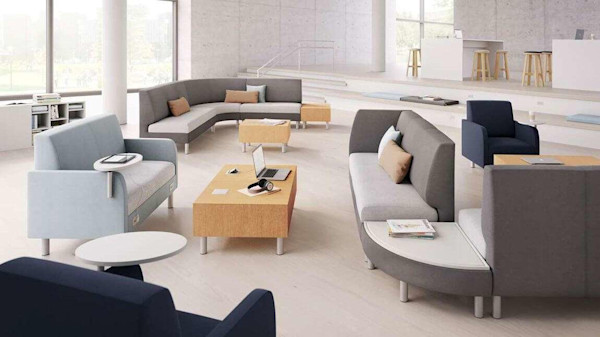Inspired Eco-Friendly Offices Incorporate Sustainable Furniture

Companies now know that office design impacts employee productivity, physical and mental well-being, and employee retention. But how many companies consider the impact of their office design on a sustainable planet? LEED building standards have been around since the early 90s, and in their more than 20 years of growth and recognition, they've expanded from a standard of new construction to a comprehensive set of interlocking recommendations that cover design, construction, maintenance, and operation of a building. Notice what's missing? What good is an eco-friendly workplace if there's nowhere to sit and do your job?
According to the EPA, 8.5 million tons of office furniture finds its way into landfills every year.
That's a staggering amount, but what makes it catastrophic is the idea that those items will be replaced by something that also will be thoughtlessly discarded in a few years. Design trends change, and the office that goes out of fashion has a harder time keeping talented employees on the payroll. Commercial furniture is a $10 billion a year industry. It's easy to see the landslide these numbers are capable of contributing to, isn't it?

>> The design of your office matters—inside your company walls and out.
The Right Furniture to Improve the Environment
So what kind of furniture do you look for to fulfill your office design plans? Sustainable may have started out as a buzzword, but today it's a cornerstone of ecologically friendly thinking. You want to work with manufacturers who think sustainably, too.
Consider every piece of furniture you need carefully from its concept design to its delivery to your door. Avoid banned materials, chemical treatments (such as PVC, benzidine dyes, hexavalent chromium, hazardous phthalates, and PBDE flame retardants). A quality furniture manufacturer can provide you with the specific raw materials used to manufacture your furniture choices before you buy them.
Read the full article on Inc.com.
Want to explore more? Check out these related topics:



